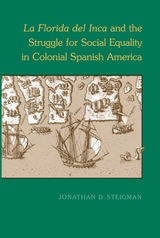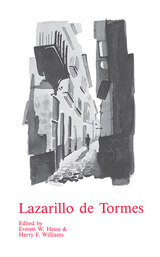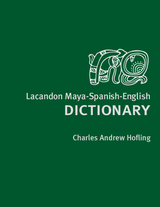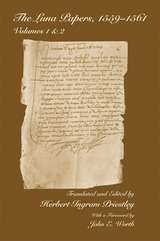7 start with L start with L

Students of Spanish language and culture can now benefit from a text that provides them with an understanding of contemporary Spanish history and society while refining their knowledge of the language and expanding their vocabulary.
La España que sobrevive (originally published in Madrid in 1987) explores the aftermath of the Franco era in Spain. It presents an objective and nonpartisan, yet humorous and affectionate, view of the important aspects of contemporary Spanish history and society. Topics include the transition to democracy; regionalism and nationalism; key players in current affairs; important institutions such as the monarchy, military, and the church; sexual mores; culture; the media; and politicized approaches to Spanish history.
For this edition, William W. Cressey has edited Fernando Díaz-Plaja's text to make it accessible to English-speaking students at an advanced level of Spanish reading skills. Cressey has also added study aids to the book—vocabulary and footnotes, glosses on proper names, questions for discussion, notes on grammar and rhetoric, and exercises. The study aids are gradually phased out, so that the final chapter is presented as stand-alone reading without any supplementary materials.
Cressey's adaptation of Díaz-Plaja's highly respected work provides an alternative to literary sources for foreign language instruction—a new resource for teaching foreign languages across the curriculum and instruction through content. Bridging the gap between the fairly simple intermediate readers and texts written for adult native speakers, this book can serve as either a supplementary or main text in the advanced study of language or history, or in preparation for study abroad. La España que sobrevive is a practical tool for teaching not only the language but also the many facets of modern Spanish culture.

A cross-disciplinary view of an important De Soto chronicle.
Among the early Spanish chroniclers who contributed to popular images of the New World was the Amerindian-Spanish (mestizo) historian and literary writer, El Inca Garcilaso de la Vega (1539-1616). He authored several works, of which La Florida del Inca (1605) stands out as the best because of its unique Amerindian and European perspectives on the De Soto expedition (1539-1543). As the child of an Indian mother and a Spanish father, Garcilaso lived in both worlds--and saw value in each. Hailed throughout Europe for his excellent contemporary Renaissance writing style, his work was characterized as literary art. Garcilaso revealed the emotions, struggles, and conflicts experienced by those who participated in the historic and grandiose adventure in La Florida. Although criticized for some lapses in accuracy in his attempts to paint both the Spaniards and the Amerindians as noble participants in a world-changing event, his work remains the most accessible of all the chronicles.
In this volume, Jonathan Steigman explores El Inca’s rationale and motivations in writing his chronicle. He suggests that El Inca was trying to influence events by influencing discourse; that he sought to create a discourse of tolerance and agrarianism, rather than the dominant European discourse of intolerance, persecution, and lust for wealth. Although El Inca's purposes went well beyond detailing the facts of De Soto’s entrada, his skill as a writer and his dual understanding of the backgrounds of the participants enabled him to paint a more complete picture than most--putting a sympathetic human face on explorers and natives alike.

First published in 1554 and banned by the Inquisition, the anonymous Lazarillo de Tormes begat a whole new genre—the picaresque novel. This classic has had enduring popularity as a literary expression of Spanish identity and emotion. Through its daring autobiographical form the reader observes the magnificent, conquering Spain of Charles the Fifth through the inner consciousness of the humble Lazarillo.
This editon includes the annotated Spanish-language text and prologue (with modernized and regularized spelling) , a full vocabulary, and concise footnotes explaining allusions and translating phrases of varying difficulty.
Spanish-language with introductions in English

Following the same trilingual format as Hofling’s Mopan Maya-Spanish-English Dictionary, this reference contains pronunciation and grammatical information. It is a hybrid of a root dictionary and one with words in alphabetical order; words can be looked up in these two different ways, making it easy to use for both native and nonnative speakers. It also accommodates Spanish speakers who wish to learn Lacandon, and in the future is likely to be helpful to Lacandon-speaking children, who increasingly use Spanish outside the home, while preserving a record of this indigenous language.

Learning French from Spanish and Spanish from French provides adult English speakers who have learned either Spanish or French as a second language with the tools to learn the other as a third language. Research in the growing fields of third-language acquisition and multilingualism documents how successful language learners intuitively build on their existing knowledge as they learn a new language. In this vein, Learning French from Spanish and Spanish from French takes advantage of the fact that learners with intermediate proficiency in a second language are used to thinking consciously about language, know themselves as language learners, and can capitalize on what they know about one language to understand the other. With chapters conveniently organized by grammatical concept and including supplementary resources such as exercises, parallel reading texts, and audio files, this book will benefit students, travelers, and budding multilinguals alike.

Medieval scholars imagined the library as a microcosm of the world, but as novel early modern ways of managing information facilitated empire in both the New and Old Worlds, the world became a projection of the library. In The Librarian’s Atlas, Seth Kimmel offers a sweeping material history of how the desire to catalog books coincided in the sixteenth and seventeenth centuries with the aspiration to control territory. Through a careful study of library culture in Spain and Morocco—close readings of catalogs, marginalia, indexes, commentaries, and maps—Kimmel reveals how the booklover’s dream of a comprehensive and well-organized library shaped an expanded sense of the world itself.

Marks the celebration by the modern city of Pensacola, Florida, of the 450th anniversary of Luna’s fateful colony
The 1559–1561 expedition of Don Tristán de Luna y Arellano to Florida was at the time of Spain’s most ambitious attempt yet to establish a colonial presence in southeastern North America. In June of 159, eleven ships carrying some five hundred soldiers and one thousand additional colonists, including not just Spaniards but also many of Aztec and African descent, sailed north from Veracruz, Mexico, on their way to the bay known then as Ochuse, and later as Pensacola. Finally arriving in mid-August, the colonists quickly sent word of their arrival back to Mexico and unloaded their supplies over the next five weeks, leaving vital food stores onboard the vessels until suitable warehouses could be constructed in the new settlement. When an unexpected hurricane struck on the night of September 19, 1559, however, seven of ten remaining vessels in Luna’s fleet were destroyed, and the expedition was instantaneously converted from a colonial venture to a mission in need of rescue.
Though ultimately doomed to failure by the hurricane that devastated their fleet and food stores, the Luna expedition nonetheless served as an immediate prelude to the successful establishment of a permanent colonial presence at St. Augustine on Florida’s Atlantic coast in 1565, and prefaced the eventual establishment after 1698 of three successive Spanish presidios at the same Pensacola Bay where Luna’s attempt had been made more than a century before.
READERS
Browse our collection.
PUBLISHERS
See BiblioVault's publisher services.
STUDENT SERVICES
Files for college accessibility offices.
UChicago Accessibility Resources
home | accessibility | search | about | contact us
BiblioVault ® 2001 - 2024
The University of Chicago Press









